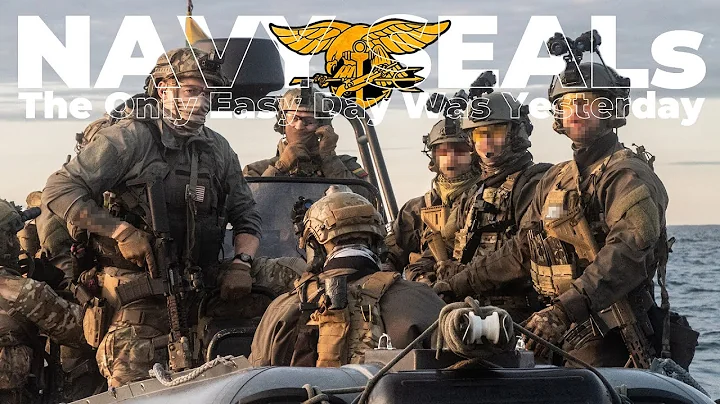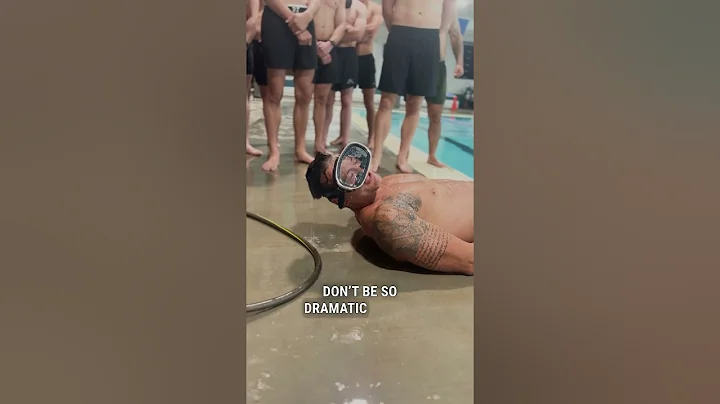
Everyone and their mother has heard of SEALs . Having risen to fame in the wake of Operation Neptune Spear, the daring SEAL Team 6 mission that killed Osama bin Laden in 2011, the SEALs have become household names.
SEALs are best known for their extremely difficult selection and evaluation process. Basic Underwater Demolition/SEAL (BUD/S) training is notoriously difficult, with attrition rates hovering between 70 and 85 percent for enlisted personnel and over 90 percent for officers, making it the most One of the selective special operations pipelines. army.
In this highly selective process, one evolution stands out.
Hell Week and Eternal Sweat

U.S. Navy SEAL candidates participate in Basic Underwater Demolition/SEAL (BUD/S) training. SEALs are the maritime component of U.S. Special Forces and are trained to conduct a variety of operations from sea, air and land. (U.S. Navy photo by Petty Officer 1st Class Abe McNatt)
Basic Underwater Demolition/SEAL (BUD/S) training is a six-month selection process and the pathway to becoming a Navy SEAL.
is divided into three stages (first stage, second stage, third stage).
The first phase is the basic training portion of BUD/S, where students learn to work in teams and instructors exert increasing mental and physical pressure on them. This is when Hell Week happens.
Lasting from Sunday night to Friday morning, Hell Week forces students to run more than 200 miles, often with heavy dinghys on their heads, swim endless miles, and engage in hours of physical training in the cold, wet, and sand . During the nearly six days of evolution, the students suffered approximately four hours of sleep deprivation.
“Hell Week occurs in week 4 of a 26-week, three-phase training called BUD/S. Each phase gets harder and has to be run and swam faster to pass. Climb, Distance Swim , long-distance running, land and sea de-escalation, the use of advanced weapons, day and night use of pure oxygen rebreathers for scuba diving and hours of underwater activity causing multiple injuries to multiple organs, bones, skin and brain. Created opportunity,” retired Navy SEAL officer and physician Bob Adams told Sandboxx News.
U.S. Navy SEAL candidates participate in Basic Underwater Demolition/SEAL (BUD/S) training. (U.S. Navy photo by Petty Officer 1st Class Abe McNatt)
One of the most interesting medical oddities that happened to students during Hell Week had to do with their core temperatures.
"Our core body temperature sometimes drops below 90 degrees (98.6 is normal) and now years later we all have core body temperatures below normal. This is important because our brains (hypothalamus) are Permanently reset to lower 'normal' levels, and while exercising or even sleeping, we sweat more than others as the body attempts to cool itself to a new set point," says Adams.
After more than a dozen years as a Navy SEAL officer, Adams entered medical school and became an Army doctor, eventually becoming the command surgeon for the Army's elite Delta Force. Adams detailed the incredible stress Hell Week puts on the body in his 2017 book, "The Impossible Six Days: SEAL Hell Week—A Doctor Looks Back."
"Some wives complained that they had to put plastic sheets on their beds because their husbands soaked them every night for 6-12 months! Also in the medical literature of maritime survivors of the Winter Battle of Chosin Reservoir during the Korean War Reports like that, a lot of them freezing to death," Adams added.
“My book, The Impossible Six-Day SEAL Hell Week—A Doctor Looks Back, tells the story of the Class of ’81 as we trudged, shivering, through a winter of Hell Week. 70 Only 11 of them graduated,” Adams told Sandboxx News.
The Dangers of Hell Week
A sailor participating in the first phase of Basic Underwater Demolition/SEAL (BUD/S) training recovers during a lunch break. The previous week, the sailor had successfully completed "Hell Week," the five half-day portions of the first phase of training in which students are only allowed a total of four hours of sleep. (U.S. Navy photo by Petty Officer 2nd Class Abe McNatt)
Naturally, Hell Week is a dangerous evolution and has had its share of deaths in the past.
When it comes to injuries during Hell Week and BUD/S in general, there are a few that tend to pop up a lot on the candidate committee.
The most common injuries are tendinitis of most joints, plantar fasciitis, cuts and bruises, fractures of the hands, feet, arms, and legs, pneumonia, hypothermia, fatigue to hallucinations, and due to cold and calorie deprivation.
"Our bodies have never been (and will never be) pushed to the physical and mental limits of six days without sleep, freezing, constantly shaking, and pushed to levels of exhaustion that cause hallucinations. Things that happen to everyone including Iron deficiency anemia prevents us from donating blood in the week after hell week, causing toenails to fall off and feet to wear without effort trench foot (a condition caused by persistently wet boots), swelling of the legs and feet leading to removal Our boots are dangerous because we can’t put them back on,” Adams told Sandboxx News.
Hypothermia is closely monitored by instructors because it can be very dangerous and kill students quickly. The physical, mental, and emotional toll required to get through Hell Week is so great that some students report having no memory of it at all—they wake up on the final day to find it is over.
To have the energy to complete their evolution, the students burned over 8,000 calories a day throughout Hell Week, but they still managed to lose weight.





















